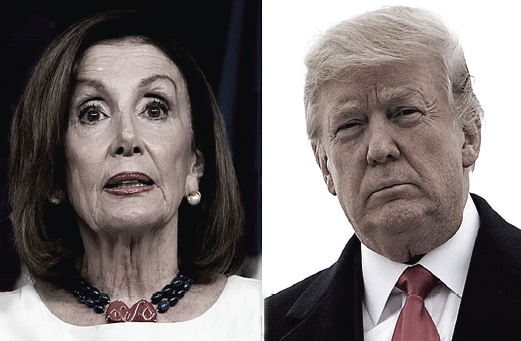IMPEACHMENT
The presidency of Donald Trump has been highly controversial. Those who oppose him argue that his actions are a threat to the institutional well-being and the international system of alliances. Those who support him argue that he is a refreshing figure inside of a rigid political ecosystem and a change of political rhythm that favors groups that claim to have been forgotten. Many pages can be written about this divide. However, it is a fact that this presidency has ruptured political tradition and has created a lot of tension between different institutions. This tension reached its zenith on September 24th of this year when Nancy Pelosi, Speaker of the House of Representatives, announced a formal inquiry to activate an impeachment, which can lead with the removal from office of the president.
The impeachment of a president is a very unusual event. In the world of political science, it is the equivalent of a total eclipse of the sun. It has only happened twice. In 1868, during the Johnson presidency, and in 1998, during the Clinton presidency. In neither of these instances was the president removed from office. Because this phenomenon is going to be part of the discussions of the coming days, it is pertinent to know the details of the process. The impeachment has its origins in article two, section four of the constitution which states: “The President, Vice President and all civil Officers of the United States, shall be removed from Office on Impeachment for, and Conviction of, Treason, Bribery, or other high Crimes and Misdemeanors”. It is important to highlight that the clause of “high Crimes and Misdemeanors” is not limited to criminal actions. Alexander Hamilton arguments in the Federalist Paper #65 that these proceedings judge an abuse of electoral trust. The argument of Speaker Pelosi, according to a New York Times article on the topic, has to do with a phone call between President Trump and Ukrainian President, Volodymyr Zelensky, in which Trump asked him to investigate his political rival, Joe Biden and his son, Hunter Biden. Pelosi argues that this is enough reason to pursue impeachment because the actions of President Trump break the presidential oath, place a risk in national security and damage electoral integrity. If the procedure happens, it would have a political and a judicial component. The first step would be that the House of Representatives will present articles of impeachment. Traditionally, the House Judiciary Committee presents those articles after an investigation. The House approved the investigation on October 31st. The next step is that the committee responsible for the investigation presents the articles of impeachment. Once these are presented, they will be voted in the House of Representatives. If they receive a simple majority, it goes to the Senate where, according to an article from The Hill, there will be a trial presided by the Chief Justice of the Supreme Court and in which managers designated from the House of Representatives serve the function of prosecutor. The Senators serve as the jury and, if a majority approves the articles in question, then the president is removed from office. It is important to highlight, however, that there is not an established timeframe for the trial. The prospect of an impeachment is incredibly unusual and it´s a landmark for the generation that lives through it. It is worth following this story as it develops. |


